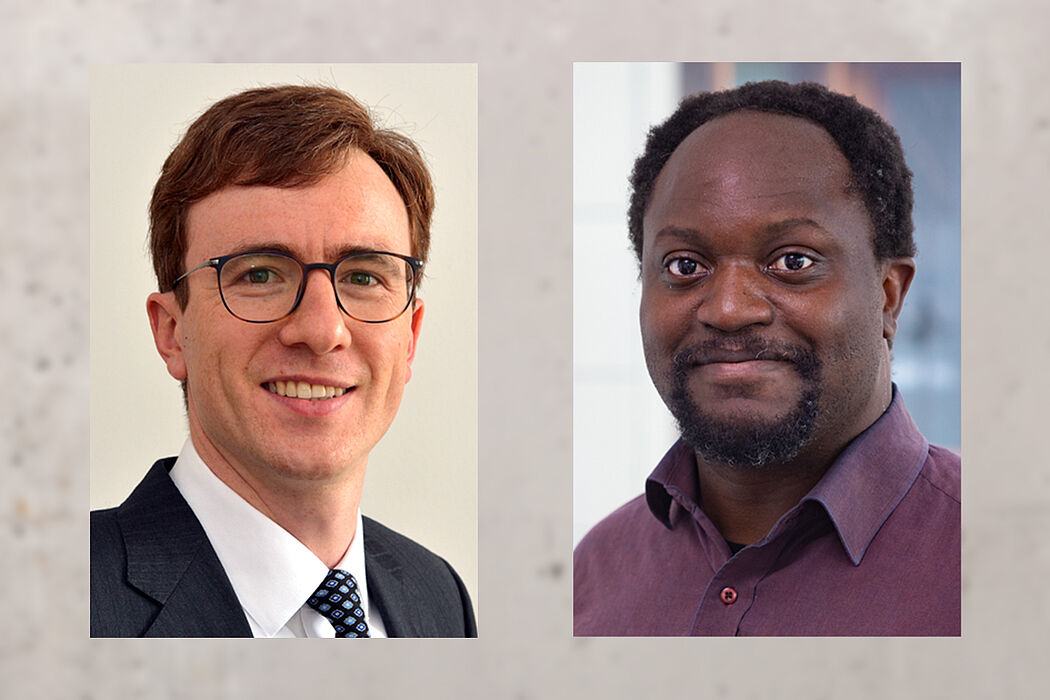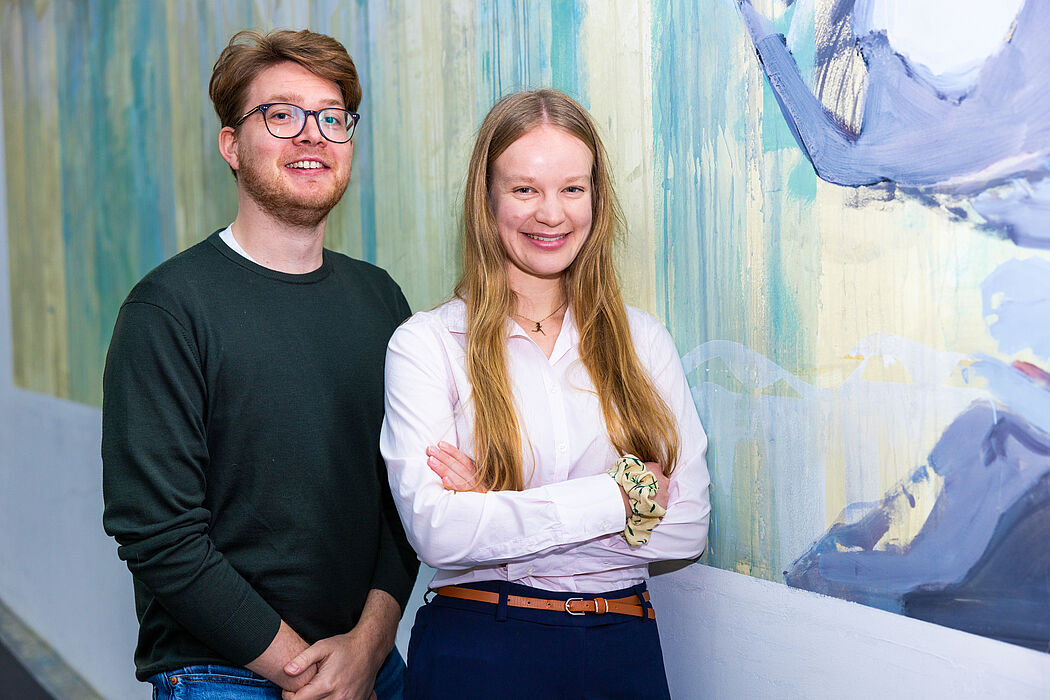With the steadily increasing integration of artificial intelligence into everyday life, it becomes increasingly important to ask how trustworthy these technologies are. The Research Training Group for Trustworthy AI Technology ‘DataNinja’ aims to contribute to this with various projects. One project is the Real-time Configuration of Algorithms with Multi-armed Bandits (EKAmBa) headed by Professors Dr Kevin Tierney (Bielefeld University) and Dr Axel-Cyrille Ngonga Ngomo (Paderborn University) together with Associate Professor Dr Eyke Hüllermeier (LMU Munich). Doctoral students Elias Schede (Bielefeld) and Jasmin Brandt (Paderborn) are researching how AI can perform faster or better—and, as a result, strengthen confidence in the systems.
How does your work help to make AI more trustworthy?
Jasmin Brandt: For the configuration of algorithms, we are developing methods with strong theoretical guarantees in order to increase confidence. We can show that they work well even in the worst-case scenario. In comparison, a configuration found purely heuristically, by a process of trial and error, can only guarantee optimal functionality on the tested data sets. Our approach offers this security for all problem data sets.
Elias Schede: The robustness of the algorithms is also important. I have often tried to optimize algorithms and test different parameter configurations. Some of these configurations are quite unconventional. It is possible that developers have not considered all the possible scenarios. We identify these gaps and thus increase the robustness of the input. This is particularly the case for algorithms that can be applied to different classes of problems. A fairly general algorithm can even be customized to a specific class of problem.
How exactly do you improve the algorithms?
Elias Schede: I work on configuring algorithms. Imagine a racing car that offers countless setting options to maximize performance on a racetrack. The goal is to find a configuration that ensures the best possible driving performance on not just one, but several racetracks. This involves testing various settings. However, this is a costly process, requiring a lot of work time and travel costs. We develop efficient solutions to search for these configuration options as effectively as possible. We want to find the optimal configuration for our racing car with as few tests as possible so that it works exceptionally well on all tracks.
Jasmin Brandt: My focus is on multi-armed bandits. In such sequential decision-making problems, you have to choose between different options at each time step. Immediately after choosing one of the options, you can see a reward value for that option. This is similar to the payout when playing a slot machine. In the area in which the algorithm configuration is applied, the configurations correspond to the options and, for example, the runtime of the algorithm with the selected configuration corresponds to the reward. My primary interest lies in a special scenario in which you can select several configurations per time step. We then use the duelling method to compare different algorithm configurations. Here, we no longer monitor reward values or runtime, but only which of the selected configurations is best or fastest. Let’s stick with the racing car example: we race two cars against each other and see which one reaches the finish line faster. In each case, it is the same racing car, but in different configurations. This allows us to gradually adapt the configurations and find the best one.
What are the possible application scenarios for what you are researching?
Elias Schede: We look at real-time settings. To explain this, we need to move away from the racing car analogy. A delivery service would be an example of a real-time setting. At the beginning of each day, the delivery service receives a list of customers and has to decide in which order to make the deliveries. Algorithms are available to solve this problem on a daily basis with all the different customer addresses. The aim is to find the best route as quickly as possible every day. Therefore, I try to select the optimal parameter configuration for the algorithm. After I’ve received feedback, I adjust the parameters. The next day, the problem can be solved again with improved configurations.
This is a typical everyday example. Aren’t delivery services using it yet?
Kevin Tierney: A lot of companies lock the parameters of their algorithms, which means that they cannot be changed using external software such as our configurator. If there are ‘open’ parameters that can be changed, these are often quickly adjusted manually. However, this means that performance is neglected—something that could be improved with a structured search like the one Jasmin and Elias use.
So, there is still scope for optimization.
Elias Schede: There is room for improvement. We analyse both the runtime—that is, to solve a problem as quickly as possible—and the quality of the problem solution. When I look at the default configuration of an algorithm and compare it with the configuration that I have found, the latter is always faster or better.
Jasmin Brandt: These methods can be used in all situations in which an algorithm with certain customizable parameters is being applied. Thanks to automation, the range of applications continues to grow.
The cooperation within DataNinja has been going on for two years. How do you find collaborating across locations?
Elias Schede: In our collaboration, we complement each other’s work perfectly: Jasmin contributes her expertise on the theoretical side, while I try to provide empirical evidence that our methods work.
Axel-Cyrille Ngonga Ngomo: Because it is highly structured, the Research Training Group is very effective. At weekly meetings, either doctoral researchers present their progress or guest lecturers give new impulses with their presentations. Because the college is organized as a network, it also serves as a contact point for companies wanting to use AI systems that can adapt flexibly to requirements. This means that doctoral researchers can quickly establish connections with industry.
Jasmin Brandt: And the expertise of two professors from different universities is available in each thesis project, which is very helpful. As a result, interesting new constellations have formed, also for future projects. That’s how I have now found myself on a research stay at the ETH [Federal Institute of Technology] in Zurich. I have learnt a lot, made new contacts, and gained new insights.
Research Training Group with seven projects
Nine universities and colleges from North Rhine-Westphalia are working together in the DataNinja Research Training Group coordinated by Bielefeld University. In addition to EKAmBa, other projects include:
- GAIA – Gaussian Processes for Automatic and Interpretable Anomaly Detection (FernUniversität in Hagen and OWL University of Applied Sciences and Arts)
- ML4ProM – Machine Learning and Drift Detection Methods for Predictive Prevention Technologies in Process Mining (RWTH Aachen University and Bielefeld University)
- NireHApS – Neuro-inspired and resource-efficient Hardware-Architectures for plastic SNNs (Bielefeld University of Applied Sciences and Bielefeld University)
- (RL)3 – Representation, Reinforcement and Rule Learning – Transparent decision making through explainable AI models (Ruhr University Bochum and Cologne University of Applied Sciences)
- RoSe – Robust Individualization of Smart Sensor Technology (Bielefeld University of Applied Sciences and Bielefeld University)
- X-FI – Explainable Feature Importance (TU Dortmund University and Paderborn University)
DataNinja is one of the outstanding research alliances in which Bielefeld University and its partners are working on AI. Together with the universities of Bremen and Paderborn, Bielefeld University is currently applying for a Cluster of Excellence that will utilize the concept of co-construction to improve interaction between humans and machines.


